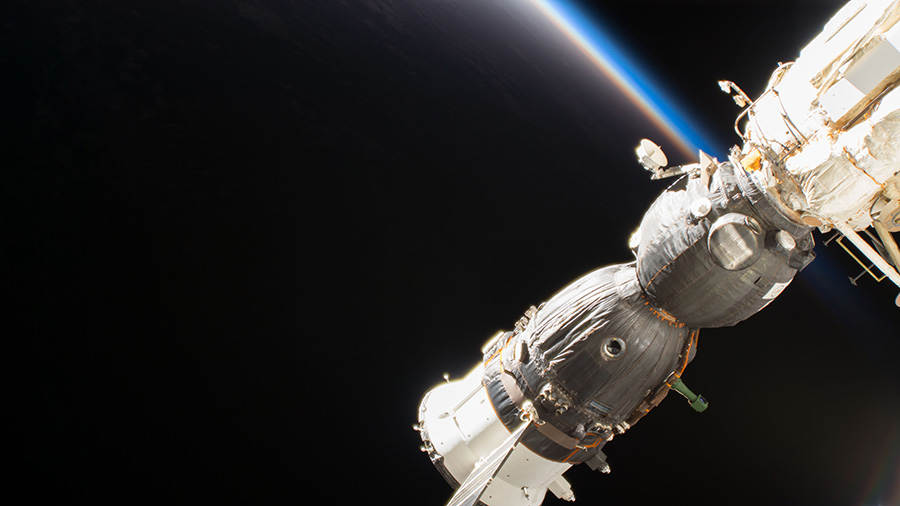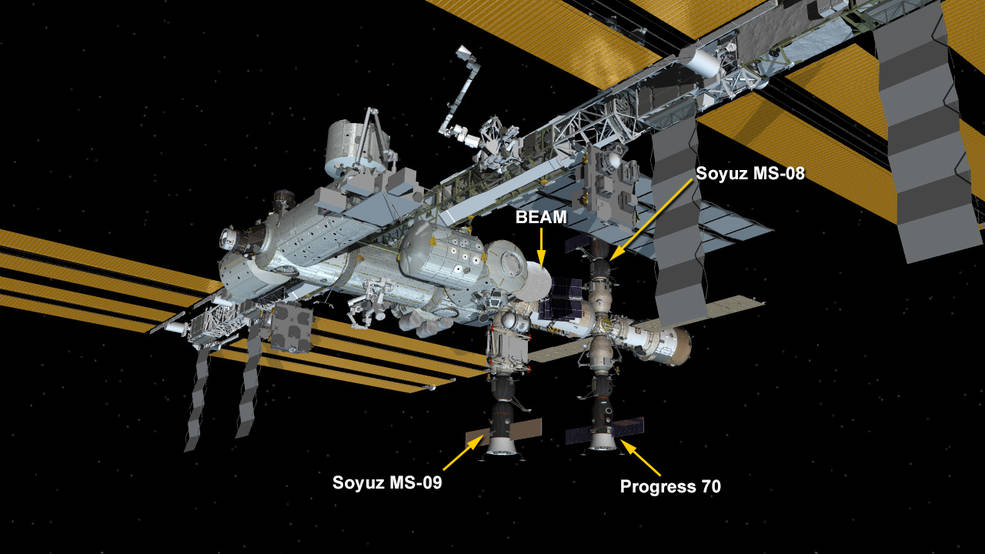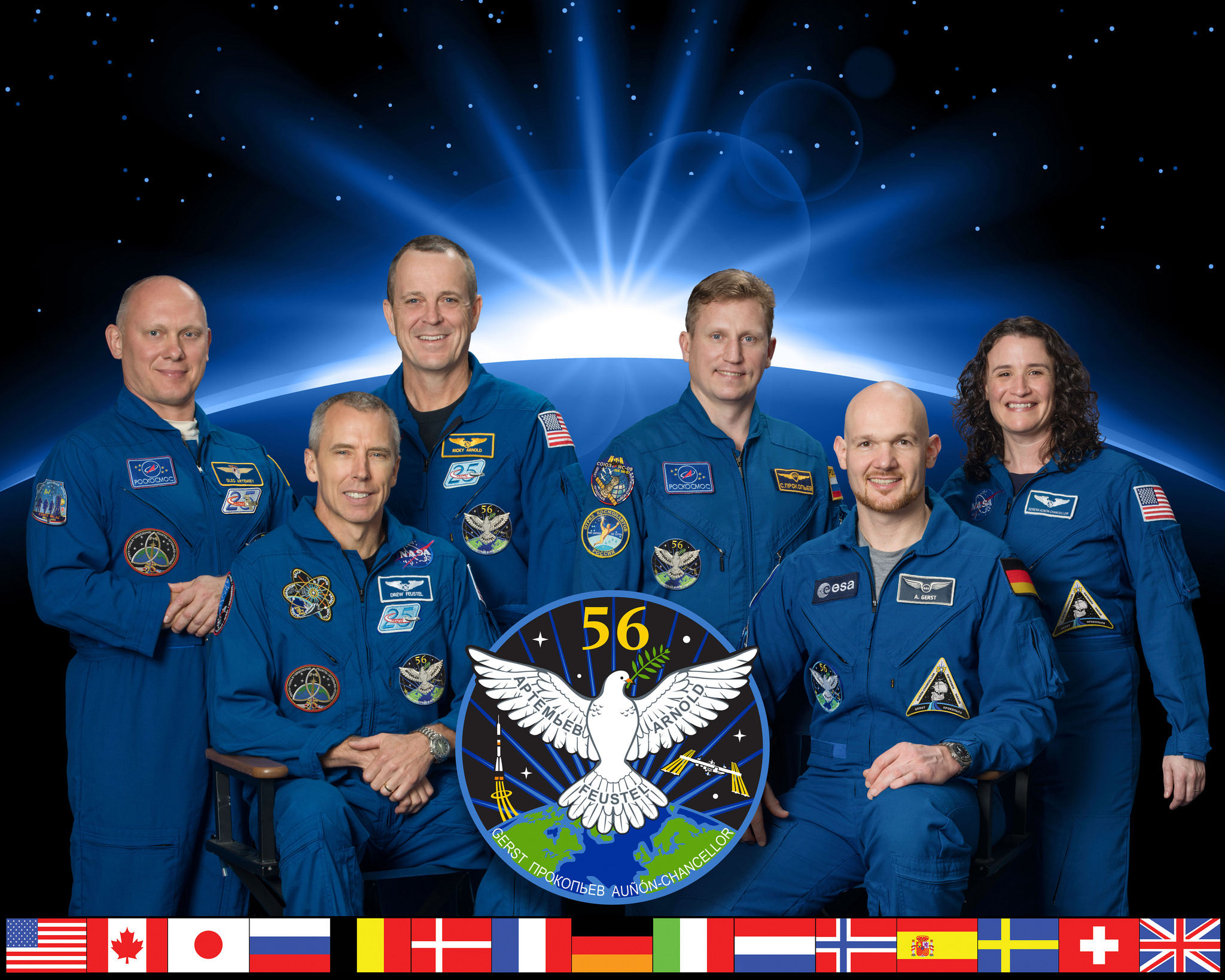
A Japanese cargo craft is orbiting Earth today and on its way to resupply the International Space Station. Meanwhile, the six Expedition 56 crew members are researching a variety of space phenomena as a trio prepares to return to Earth.
JAXA’s (Japan Aerospace Exploration Agency) resupply ship launched Saturday from Japan loaded with over five tons of new science and supplies destined for the crew. The H-II Transfer Vehicle-7 (HTV-7) is scheduled to arrive at the space station on Thursday. Flight Engineer Serena Auñón-Chancellor will be in the cupola backing up Commander Drew Feustel when he captures the HTV-7 with the Canadarm2 around 8 a.m. on Thursday.
Included among the critical payloads packed inside the HTV-7 is the Life Sciences Glovebox. The new facility will enable research to advance human health on Earth and in space. HTV-7 is also delivering new lithium-ion batteries to upgrade power systems on the station’s truss structure. NASA TV begins its live coverage of the HTV-7 arrival and capture Thursday at 6:30 a.m.
Today’s science work aboard the orbital lab included looking at DNA and fluid physics. Auñón-Chancellor sequenced DNA extracted from microbial samples collected inside the station. Feustel activated gear for an experiment researching the atomization of liquids that could improve fuel efficiency on Earth and in space.
Feustel later joined his Soyuz crewmates Oleg Artemyev of Roscosmos and Ricky Arnold of NASA and began preparations for their return to Earth Oct. 4. Artemyev will command the ride back to Earth inside the Soyuz MS-08 spacecraft flanked by the two astronauts. He and Feustel practiced on a computer their Soyuz descent back into Earth’s atmosphere. Arnold packed up crew provisions and other items inside the Russian spacecraft.









